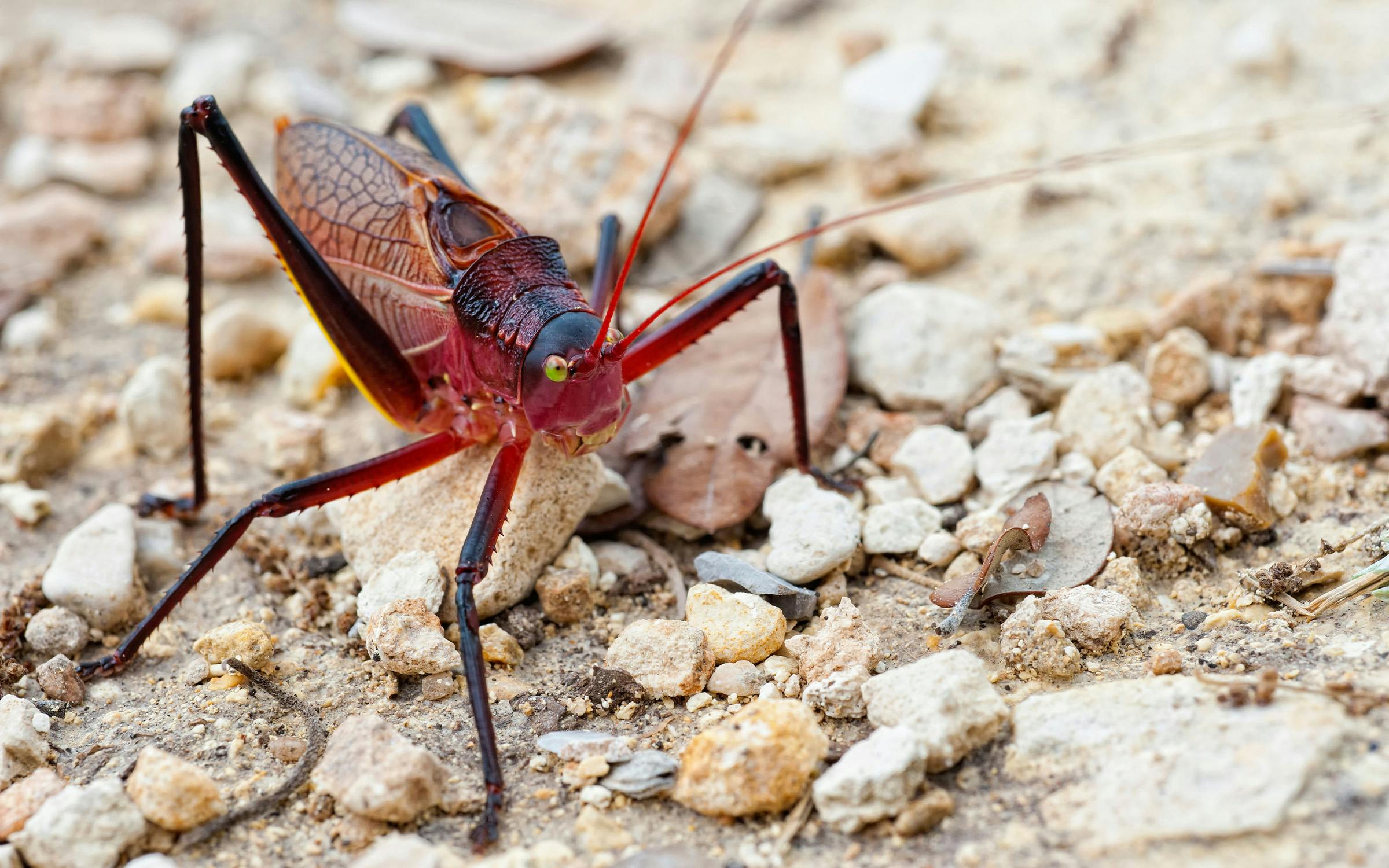Katydids prefer to be heard rather than seen. The insect’s name, an onomatopoeic transcription of the male mating call, first appeared in print in 1784, in Scottish American physician J.F.D. Smyth’s travelogue A Tour in the United States of America. “Their noise is loud and incessant,” Smyth wrote, “one perpetually and regularly answering the other in notes exactly similar to the words Katy did, or Katy Katy did, repeated by one, and another immediately bawls out Katy didn’t, or Katy Katy didn’t.”
Scientists have now identified more than eight thousand species of katydids around the world, including around seventy in Texas. But the variety keeping you awake this summer is most likely the Central Texas leaf katydid, a.k.a. the truncated true katydid (Paracyrtophyllus robustus). Although most common in the Hill Country, the species is found across much of Texas. Around 1.5 inches long, with three pairs of legs and threadlike antennae protruding from between their beady eyes, leaf katydids dwell high in oak trees. They especially like post oaks. Camouflaged as leaves to evade predators such as birds and bats, the insects are nocturnal and herbivorous. Males rub their forewings together to produce their distinctive, high-pitched chirp.“It’s a pretty charismatic species,” said Texas A&M University entomologist Hojun Song. “It just screams ‘classic katydid.’ ”
If you’ve noticed the raspy chirping more than usual this summer, that’s because the state is currently experiencing a so-called population outbreak of leaf katydids. “You usually can’t find them, because they’re on top of trees,” Song told me. “But during an outbreak you can go out and collect hundreds of them.” Last month, a Reddit user from north-central Texas posted a video showing dozens of leaf katydids swarming the top of his car. A Hill Country resident responded, “I see a bunch of these . . . on my land.” Another commenter described a katydid hitching a ride into his house inside a grocery bag.
Listen to the chirp of the Central Texas leaf katydid:
Climate change has created the perfect conditions for a katydid bonanza. “We warmed up earlier in the year than normal,” explained entomologist Lauren Davidson, director of the Houston Museum of Natural Science’s Cockrell Butterfly Center. “It’s been very wet and rainy. All of those things come together to create the perfect habitat.”
While they’re often mistaken for crickets or cicadas, leaf katydids have longer antennae, sing only at night, and live in trees. The insects are usually green, but during population outbreaks, they tend to be brownish-red—a mystery that science has not yet unraveled. (Bubble gum–pink katydids have also been spotted in North America; the Audubon Nature Institute, in New Orleans, maintains a menagerie of around 75.) In especially severe outbreaks, katydids engage in locustlike behavior, stripping every leaf from a tree before moving on. During a 2001 outbreak in Lee County, east of Austin, an entomologist observed “several areas of almost totally defoliated post oak trees.” Not to worry, though. Unlike locusts, katydids rarely inflict lasting damage. Texas experienced subsequent katydid outbreaks in 2007, 2010, 2012, 2016, and 2018.
What we call the katydid was first described by eighteenth-century Swedish biologist Carl Linnaeus. Most insects in the order Orthoptera, to which katydids belong, are characterized by jackhammerlike hind legs adapted for jumping, plus two pairs of wings. Katydids usually can’t fly, but their wings allow them to glide or hop over short distances.
In males, the forewings serve mainly as a noisemaker. To attract a mate, a male rubs a rigid scraper embedded in the right wing against a comblike file on the left wing. Scientists call this stridulation. The conical shape of the wings amplifies the sound like a vuvuzela. It works like a charm: the leaf katydid is one of the loudest creatures in North America, capable of producing a chain saw–like 110 decibels. Females choose partners based on their calls—a louder chirp indicates a healthier male. Each katydid species makes a slightly different noise. Whether the local ones sound anything like “Katy did” is open to debate. Personally, I don’t hear it.
To mate, the male passes the female a sperm packet (or spermatophore), which includes a kind of protein snack pack (known as a spermatophylax) that the female eats to help develop her eggs.
Katydids typically live for about a year. They hatch in spring, mate in summer, and lay their eggs by fall, before dying off over the winter. So if you’re sick of the nightly racket produced by these tiny troublemakers, you only have to stick it out another few months. Until then, it’s Hot Katydid Summer.

